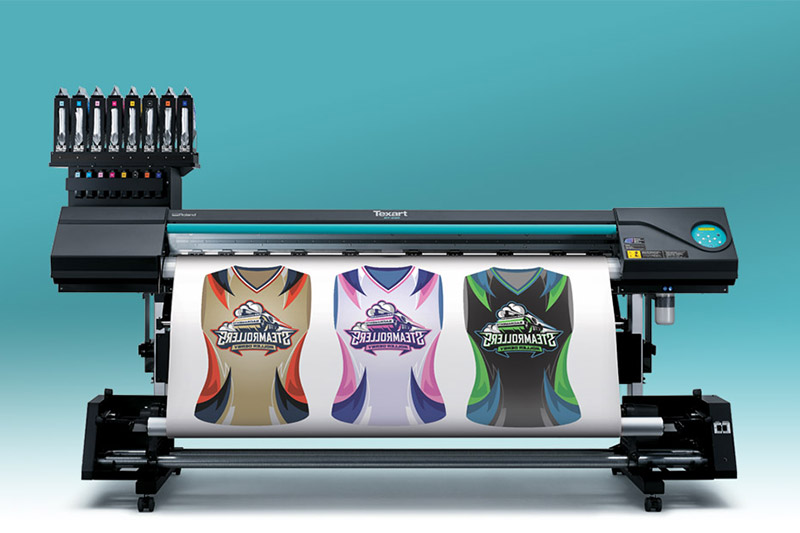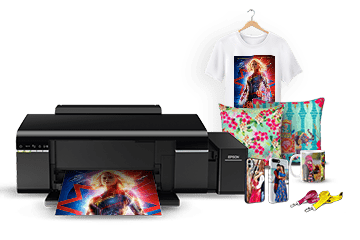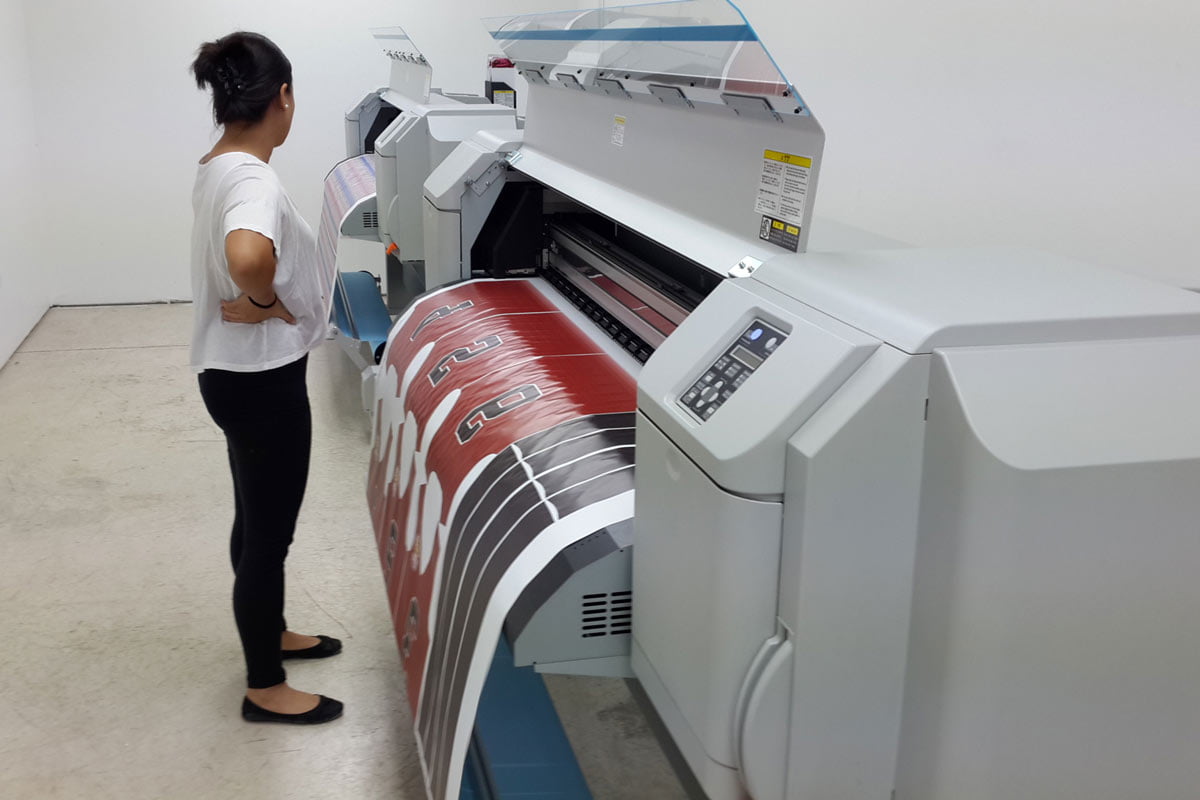The Ultimate Guide to Sublimation Printing for Personalized Garments
The Ultimate Guide to Sublimation Printing for Personalized Garments
Blog Article
Developments in DTF Printing: How It's Transforming the Industry
The textile printing sector is undergoing a substantial improvement, driven by the cutting-edge improvements in Direct-to-Film (DTF) modern technology. These innovations are not just boosting print quality and adaptability however additionally simplifying the entire printing process. With remarkable ink formulas, enhanced film and adhesive modern technologies, and the combination of automation, DTF printing offers vivid, durable prints on a range of fabrics, satisfying the boosting demand for personalization. As services look for a lot more effective and environmentally pleasant services, the ramifications of these advancements necessitate a closer examination right into exactly how they are shaping the future of fabric printing.
Improvements in DTF Innovation
Advancing quickly, DTF (Direct-to-Film) printing technology has undergone considerable improvements that are revolutionizing the fabric market. Among one of the most significant innovations is the improvement in print top quality. Modern DTF printers utilize sophisticated ink formulas that result in vivid, long lasting prints with high resolution and shade accuracy. These inks are especially engineered for compatibility with numerous textile types, making certain regular quality no matter the material.

Furthermore, advancements in movie and sticky innovations have actually improved the total application procedure. New films offer much better elasticity and bond, boosting the toughness and washability of the printed styles - DTF printing. This makes certain that the prints maintain their integrity and vibrancy even after several washes
Lastly, ecological factors to consider have actually prompted the development of eco-friendly DTF options. Suppliers are significantly adopting sustainable practices, such as using water-based inks and recyclable films, straightening with worldwide initiatives to decrease the sector's eco-friendly impact.
Benefits Over Standard Approaches
When comparing DTF printing to traditional approaches such as display printing and direct-to-garment (DTG) printing, a number of distinctive benefits arise. heat transfer vinyl printing. Among the most substantial advantages is its versatility in material compatibility. Unlike screen printing, which often calls for specific material types, DTF printing can be put on a broader variety of products, consisting of cotton, polyester, and blends, without endangering print top quality
One more significant benefit is cost-effectiveness, especially for tiny to medium-sized orders. Typical screen printing ends up being financially viable only at greater quantities due to the configuration prices involved. In comparison, DTF printing gets rid of these setup expenditures, making it a lot more economical for smaller sets and one-off layouts.
Moreover, DTF printing masters toughness and washability. The prints created are durable and maintain their stability via numerous laundry cycles, outmatching DTG prints that might split or fade in time. Additionally, DTF printing provides faster turnaround times. Without the demand for comprehensive arrangement, layouts can be printed and moved in a fraction of the moment needed for display printing.

Improved Design Capacities
DTF printing uses enhanced layout capacities that set it apart from conventional printing approaches. The procedure involves publishing a design onto a special movie, which is then transferred straight from the source to fabric.
In addition, DTF printing sustains a wide range of textiles, including cotton, polyester, blends, and even non-textile substratums. This convenience opens doors for imaginative applications in varied sectors such as style, home decoration, and advertising items. Unlike display printing, which can be limiting because of shade splitting up and pattern creation, DTF printing simplifies the process, making photo-realistic and multi-color layouts much more obtainable.
In addition, DTF printing stands out in attaining regular color precision and vibrancy. This is essential for brand name consistency and meeting consumer assumptions. The innovation likewise supports special impacts, such as metallic surfaces and glow-in-the-dark components, better expanding imaginative opportunities. In significance, DTF printing equips designers to press the boundaries of imagination, providing aesthetically stunning outcomes that were previously unattainable.
Cost and Time Efficiency
One of the remarkable benefits of DTF printing exists in its expense and time effectiveness, making it a favored choice for many businesses. Unlike conventional methods that require significant investment in displays and configuration times, DTF printing enables for direct application onto numerous products with marginal preparation.
Moreover, DTF printing excels in producing brief runs and custom orders cost-effectively. The capability to produce top quality prints without the requirement for large quantity dedications reduces waste and enhances source allotment. This versatility is particularly advantageous for local business and startups that may not have the resources to invest in anchor large-scale production runs.
In terms of functional efficiency, DTF printing's structured operations enhances total performance. Thus, DTF printing stands out as a transformative remedy in the printing sector.
Future Trends in DTF Printing
Expecting future fads in DTF printing discloses a landscape marked by fast technological developments and boosted market demand (DTF printing). One considerable fad is the assimilation of man-made intelligence (AI) and maker discovering algorithms to maximize print quality and simplify operations. AI-driven systems can predict prospective problems and readjust setups in real-time, ensuring continually top notch output
In addition, improvements in lasting products and green inks are anticipated to gain traction. As ecological concerns become much more important, the market is most likely to see a change towards biodegradable and safe inks, decreasing its eco-friendly footprint.
Modification and customization will certainly also play a critical role. With the growing customer need for special, customized products, DTF printing modern technologies are advancing to provide more elaborate and comprehensive modification choices. This pattern is supported by boosted software application solutions that enable for more complicated and innovative designs.
Finally, the go now assimilation of DTF printing with various other digital systems and shopping services will certainly end up being extra seamless. This connection will make it possible for organizations to supply on-demand printing solutions straight to consumers, additionally driving growth in the industry. These trends collectively highlight a future where DTF printing not just satisfies but surpasses the evolving requirements of the marketplace.
Final Thought

When contrasting DTF printing to standard methods such as screen printing and direct-to-garment (DTG) printing, a number of unique advantages arise. Unlike display printing, which usually requires certain fabric kinds, DTF printing can be applied to a wider variety of materials, including cotton, polyester, and blends, without endangering print top quality.
DTF printing provides enhanced style capabilities that set it apart from conventional printing methods. Thus, DTF printing stands out as a transformative solution in the printing industry.
Technologies in DTF printing substantially improve the fabric printing sector by offering premium print high quality, flexibility, and performance.
Report this page